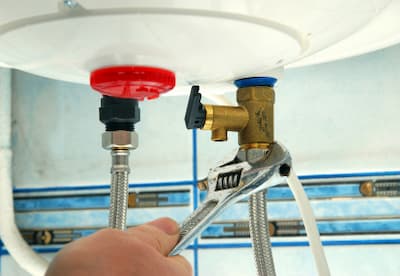Specialist Advice for Maintaining Your Home's Hot Water System
Specialist Advice for Maintaining Your Home's Hot Water System
Blog Article
We have come across this post involving Tips on Maintaining a Water Heater listed below on the internet and reckoned it made sense to share it with you here.

Warm water is vital for daily comfort, whether it's for a revitalizing shower or cleaning recipes. To guarantee your warm water system runs successfully and lasts much longer, routine upkeep is crucial. This post offers functional tips and insights on just how to maintain your home's hot water system to stay clear of disruptions and expensive fixings.
Intro
Preserving your home's hot water system may appear overwhelming, but with a few simple steps, you can ensure it operates smoothly for many years ahead. This overview covers every little thing from understanding your hot water system to DIY maintenance pointers and recognizing when to call in specialist aid.
Relevance of Keeping Your Warm Water System
Normal upkeep not just expands the life-span of your warm water system yet likewise guarantees it runs effectively. Ignoring maintenance can result in reduced efficiency, higher energy costs, and also early failing of the system.
Indications Your Hot Water System Requirements Upkeep
Recognizing when your warm water system requires attention can prevent major issues. Look out for indications such as irregular water temperature level, strange noises from the heater, or rusty water.
Flushing the Water Heater
Flushing your water heater removes sediment build-up, boosting performance and lengthening its life.
Monitoring and Changing Anode Rods
Anode poles protect against deterioration inside the container. Checking and changing them when worn is crucial.
Facility Concerns Calling For Specialist Assistance
Instances include major leaks, electrical troubles, or if your hot water heater is constantly underperforming.
Regular Expert Maintenance Benefits
Professional maintenance can include thorough inspections, tune-ups, and ensuring conformity with safety criteria.
Evaluating and Changing Temperature Settings
Readjusting the temperature level settings makes sure optimal performance and safety.
Do It Yourself Tips for Upkeep
You can carry out several upkeep jobs yourself to keep your warm water system in top condition.
Looking for Leakages
Frequently examine pipes and links for leaks, as these can lead to water damages and greater bills.
Recognizing Your Warm Water System
Before diving right into maintenance tasks, it's practical to comprehend the basic parts of your hot water system. Typically, this consists of the water heater itself, pipes, anode poles, and temperature controls.
Month-to-month Maintenance Tasks
Normal regular monthly checks can help capture minor problems before they intensify.
Testing Stress Relief Valves
Examining the pressure safety valve ensures it works correctly and protects against excessive stress buildup.
Shielding Pipes
Shielding hot water pipelines decreases warmth loss and can save power.
When to Call a Professional
While do it yourself maintenance is helpful, some concerns need specialist knowledge.
Conclusion
Normal maintenance of your home's warm water system is crucial for effectiveness, long life, and cost financial savings. By following these suggestions and recognizing when to seek expert help, you can guarantee a trusted supply of hot water without unforeseen disruptions.
How to Maintain an Instant Hot Water Heater
Before tinkering with your hot water heater, make sure that it’s not powered on. You also have to turn off the main circuit breaker and shut off the main gas line to prevent accidents. Also turn off the water valves connected to your unit to prevent water from flowing into and out of the appliance. 2. When you’re done, you have to detach the purge valves’ caps. These look like the letter “T†and are situated on either side of the water valves. Doing so will release any pressure that has accumulated inside the valves while at the same time avoid hot water from shooting out and burning your skin. 3. When the purge valves’ caps are removed, you have to connect your hosing lines to the valves. Your unit should have come with three hoses but if it didn’t, you can purchase these things from any hardware or home repair shops. You can also get them from retail stores that sell water heating systems. Read the user’s manual and follow it to complete this task properly. When the hosing lines are connected, open the purge port’s valves. 4. You should never use harsh chemical cleaners or solutions when cleaning your unit. Make use of white vinegar instead. It should be undiluted and you’ll probably use about 2 gallons. 5. Now flush your water heater. This task should probably take about 40 minutes. We can’t give you specific directions for this because the procedure is carried out depending on the type, model and brand of your heater. With that being said, refer to the user’s manual. 6. When you’re done draining the unit, you have to turn off the purge port valves again. Remove the hosing lines that you earlier installed on each of the water valves. Put the valve caps (purge port) back in their respective places and be very careful so as not to damage the rubber discs that are found inside these caps. 7. Now that everything’s back in place, check your user’s manual again to find out how to reactivate your water heating system. 8. Once it is working, turn one of your hot water faucets on just to let air pass through the heater’s water supply pipes. Leave the tap on until water flows smoothly out of it. https://www.orrplumbing.com/blog/2014/september/how-to-maintain-an-instant-hot-water-heater/

Hopefully you enjoyed reading our part about Water Heater Maintenance Tips You Can't Afford to Forget. Thanks a ton for finding the time to read through our article. Please take the opportunity to promote this content if you enjoyed reading it. Thank-you for going through it.
Get Started Report this page